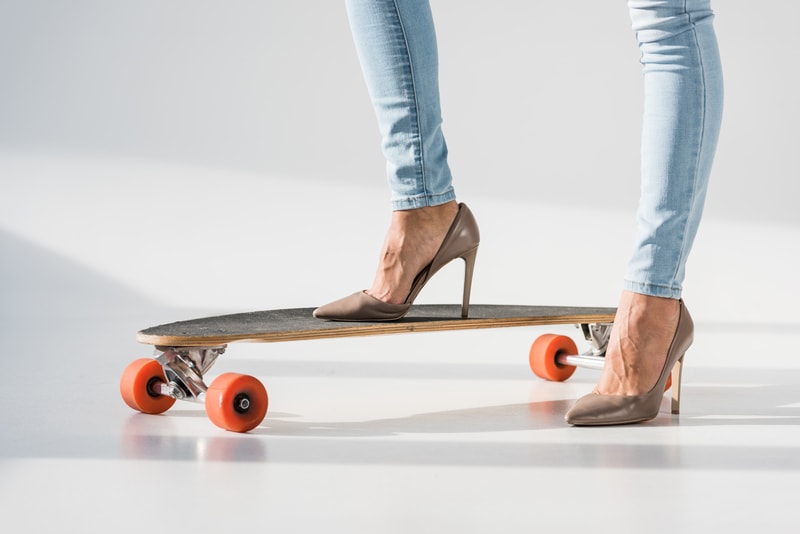We often take for granted the important role that our feet play in our everyday lives. They help us move around and even accomplish incredible athletic feats. But we neglect to acknowledge how much of a beating our feet take on even with the simplest of tasks. Our feet age just like the rest of our body, and with aging comes the weakening of the foot muscles. This usually results in debilitating foot pain, more specifically, plantar fasciitis. When it comes to foot pain, many don’t really know what to do or how to treat it. Acupressure has become a popular and natural treatment for everything from foot pain to coughing. In this article, we will cover everything from what plantar fasciitis is to the acupressure points for heel pain.
What Is Plantar Fasciitis?
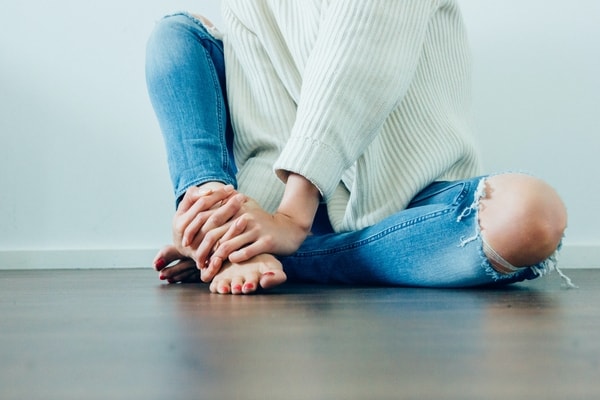
After waking up in the morning, you feel refreshed and ready to start your day. As you take your first steps, you feel sharp pain radiating from your heel. What you are experiencing in this particular moment is first-step pain, which is caused by a common foot condition called plantar fasciitis. This condition is due to inflammation of the plantar fascia, a muscle that stretches across the bottom of the foot. Like other muscles in our body, the plantar fascia can break down over time, especially if there is a significant stress on it. Usually, it manifests as small tears in the tissue around the heel. Age, exercise, obesity, pregnancy, and standing for long periods of time can increase your risk for plantar fasciitis. Conventional treatment includes reducing activities that can put stress on your heel, over-the-counter pain medication, orthotic devices, replacing shoes, massage, stretching exercises, and sometimes steroid injections in severe cases. However, these treatments aren’t always effective. Nowadays, many people are supplementing their pain management regimens with acupuncture and acupressure for plantar fasciitis. As we will later discuss, these alternative treatments involve targeting acupressure points for heel pain.
Is Acupuncture Good For Heel Pain?
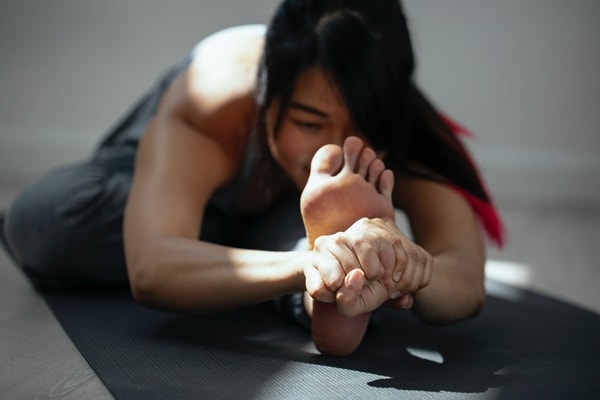
Acupuncture has been a long-standing practice in traditional Chinese medicine. This treatment is speculated to date as far back as 6000 BCE. It is based on the principle that the body contains energy that flows through meridians. A licensed acupuncturist would insert needles at specific points around the body to relieve any energy imbalances in those areas, which many believe are the cause of abnormal bodily events. The best part is that people experience little to no side effects after acupuncture treatment, and it also doesn’t pose any risks.
As you might have guessed, acupuncture is incredibly versatile. Increasing research in this field proves how effective acupuncture is for a variety of issues, including plantar fasciitis. For example, a study conducted in 1998 found that acupuncture for plantar fasciitis significantly improved patients with chronic heel pain. The research as a whole makes acupuncture a compelling low-risk treatment for anyone looking to improve their plantar fasciitis.
Can Acupressure Help Plantar Fasciitis?

For some, the thought of needles sends shivers down their spines. Acupuncture isn’t for everyone, and it isn’t the only route you can take if you are still looking for a natural alternative treatment for plantar fasciitis. Instead, you can consider acupressure. Unlike acupuncture, there is no need for needles in acupressure. It is rooted in the same principles of energy flow and imbalances but involves strategic massaging and pressure application. Even though acupressure is not as invasive as acupuncture, it is also supposed to help stimulate acupoints to help relieve pain. There is currently not enough significant evidence proving the effectiveness of acupressure for plantar fasciitis. However, it still doesn’t hurt to try! In addition, you can try it in conjunction with gua sha for plantar fasciitis, which is another massaging technique that can be done in the comfort of your own home. To treat plantar fasciitis, there are acupressure points for heel pain you can target. We will discuss a few of them below.
Acupressure Points For Heel Pain
1. Acupoint: GB-34 (Other Names: Gallbladder-34/Yang Ling Quan/Yang Mound Spring)
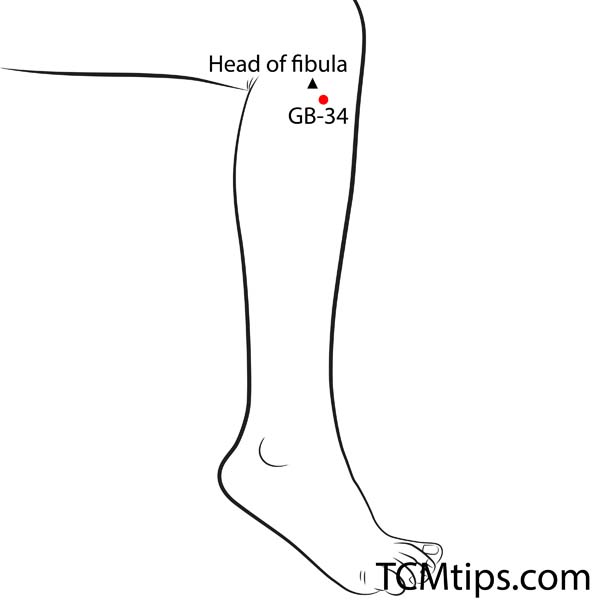
Gb-34, also known as “yanglingquan” or “yang mound spring”, is located right below the front of the knee. This acupoint is great for treating plantar fasciitis because it especially helps improve conditions with muscle or joint stiffness and tightness. In acupuncture, it is commonly used for musculoskeletal conditions as well as numbness, pain, swelling, and sciatica.
GB-34 is also one of the pressure points to relieve knee pain.
2. Acupoint: Bl-57 (Other Names: Urinary Bladder-57/Cheng Shan/Support the Mountain)
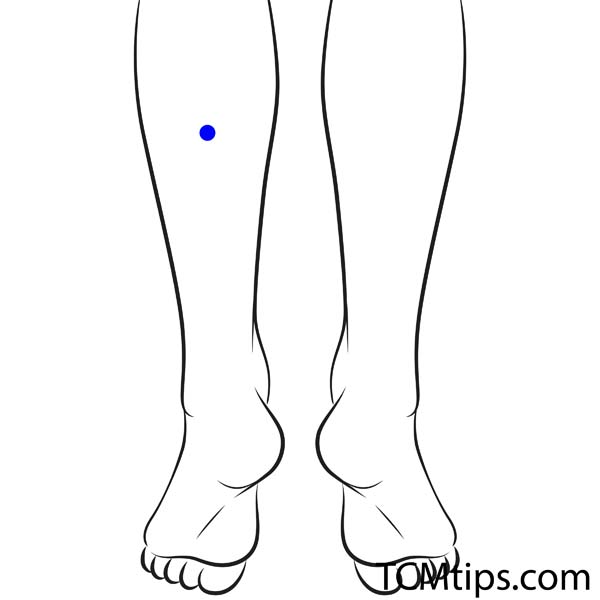
Bl-57, also known as “chengshan” or “mountain support”, is located in the middle of your lower posterior leg. It helps with plantar fasciitis more indirectly by relaxing the achilles tendon and calf muscles. Beyond the legs and feet, Bl-57 also relieves pain in the lower back and for sciatica.
Bl-57 is also one of the top 10 acupressure points to relieve body pains and aches.
3. Acupoint: KI-1 (Other Names: Kidney-1/Yong Quan/Gushing Spring)
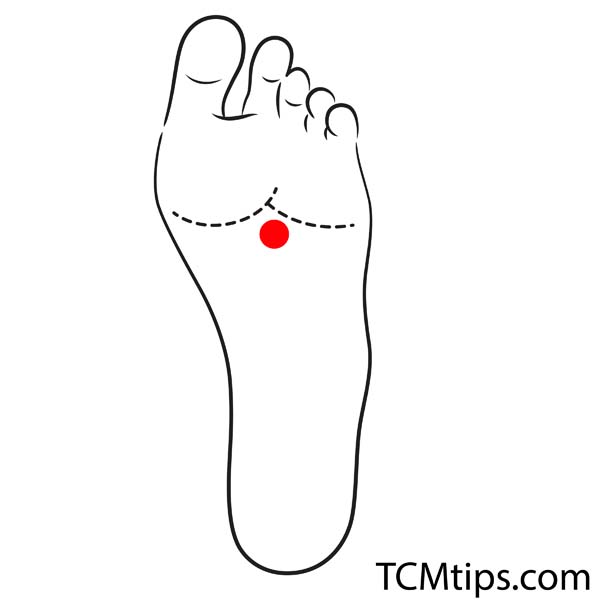
KI-1, also known as “yong quan” or “bubbling well”, is located on the sole of your foot. You can treat KI-1 if you feel a hot sensation in the sole of your feet, which may occur due to inflammation from plantar fasciitis. However, it also treats a variety of other problems like headaches, sore throat, dry mouth, and loss of consciousness.
The kidney 1 acupuncture point is the best foot reflexology point, according to TCM experts.
4. Acupoint: KI-3 (Other Names: Kidney-3/Tai Xi/Supreme Stream)
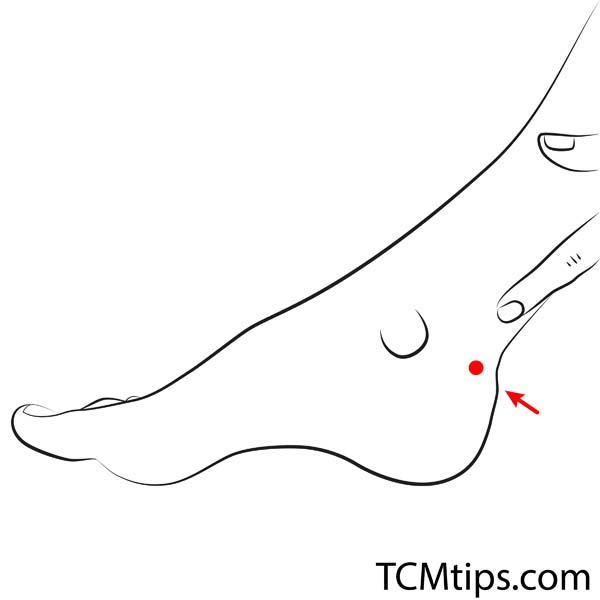
KI-3, also known as “taixi” or “great stream”, is located in the depression between the ankle bone and achilles tendon. It is perfect for treating plantar fasciitis because of its prime location close to the heel. Acupuncturists also use KI-3 for sore throat, tinnitus, dizziness, lower back pain, and a variety of other issues.
Surprisingly, KI-3 is one of the vital acupressure points for hair growth.
5. Acupoint: Bl-60 (Other Names: Urinary Bladder-60/Kun Lun/Kunlun Mountains)
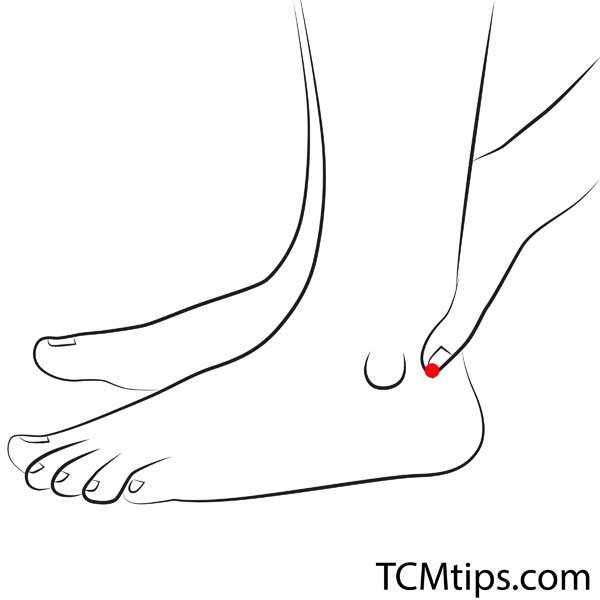
Bl-60, also known as “Kunlun” or “Kunlun mountains”, is located in between the ankle and achilles tendon and it is on the direct opposite side of KI-3. Like the other acupressure points for heel pain, this acupoint improves heel pain, but also works for shoulder, neck, back, and arm pain. Avoid using Bl-60 if you are pregnant, as it can cause difficult labor.
Bl-60 is also one of the effective pressure points on feet for back pain.

Try our Anti-Aging Gua Sha Tool designed to bring out your skin’s natural glow.
Best Gua Sha Product- Anti-Aging: The tool is designed to target 11 specific aging signs such as wrinkles and sagging skin. By following the 7-step routine, users can improve skin firmness and reduce fine lines naturally.
- Enhances Skincare Routine: It works effectively with serums and lotions, boosting absorption and efficacy of skincare products.
- Visible Skin Improvement: Users can expect a smoother complexion, reduced puffiness, and a more youthful appearance.
 P. Sze
P. Sze 